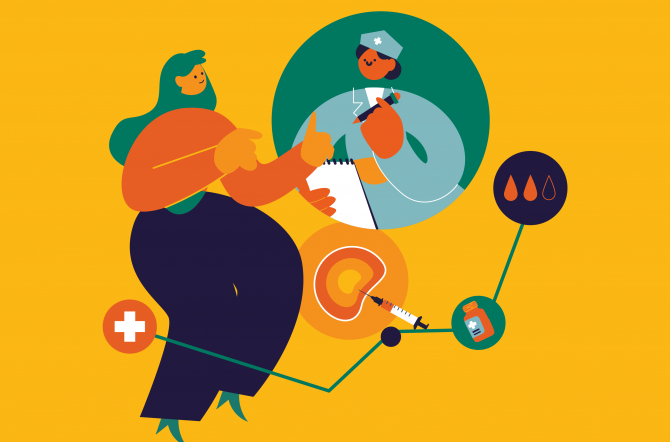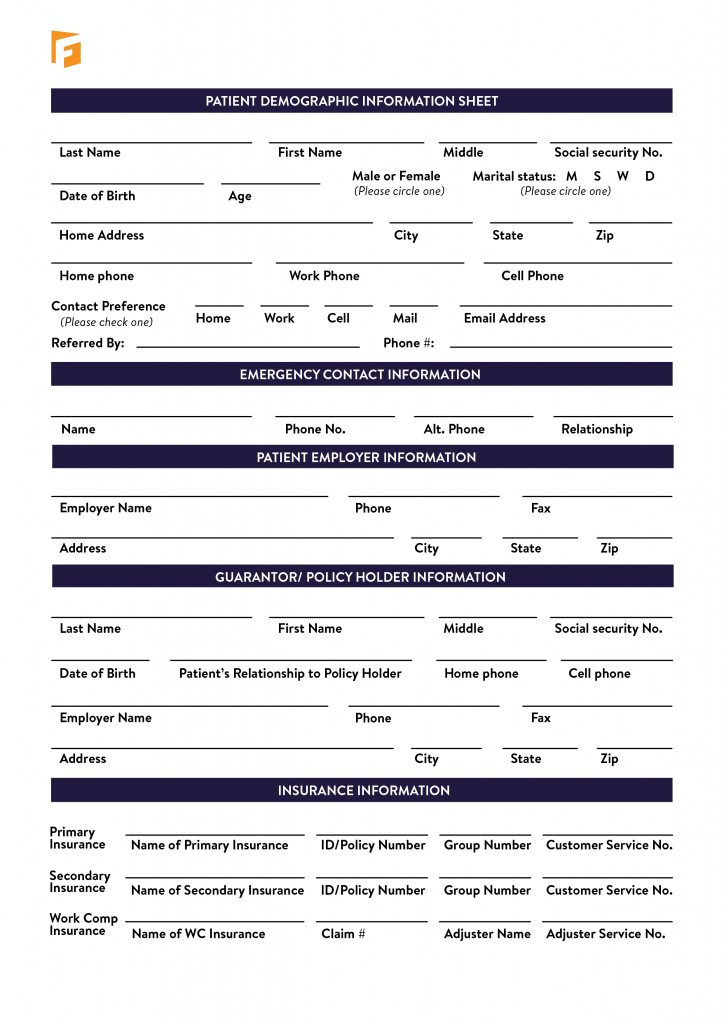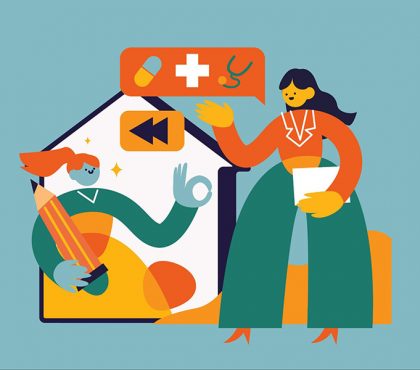Since women use lots of health services and are responsible for their families health, women’s need for health information is high. However, there are several challenges in women’s health marketing that we need to notice.
So what do we need to watch out for? Let’s dive in to explore the challenges and how we can overcome them to achieve successful communication between physicians and female patients.
What are the challenges in healthcare communication with women?
#1 Huge load of information on the Internet
According to research about Gender Differences in Searching for Health Information on the Internet, women are more likely to use the Internet for browsing health-related information. Besides taking advice from healthcare providers, women tend to search for knowledge and tips in online forums and groups on social media.
We understand that women search due to the high demand for health information. However, the vast loads of Internet data easily confuse them on which information they can trust. They may be distracted by different sources of information and opposite points of view from online users.
Have you ever experienced any skin problems? And what would you do whenever you have issues with your skin? Having researched women with skin problems, we see that instead of immediately asking the physicians, they search for their symptoms on the Internet. They may join skincare-focused groups on social media to seek advice from people with the same symptoms. However, there is no one-size-fits-all solution for women’s skin. People have different skin types. Solution for dry skin cannot be applied to oily skin. So, even when having the same problem, group members may share different experiences. Patients can be confused by
Many healthcare providers also shared with us that they have difficulties consulting disoriented patients. As patients need clarification on a massive load of information, it will be hard for healthcare providers to build trust and take them back on the right track.
#2 Difference in demographic and behaviors
Women have different ages, jobs, living areas, education levels, relationship statuses, hobbies, and living conditions. So one communication method can only be applied to some women. Different women will have other ways to absorb the knowledge.
When working on skin care projects, we saw a health knowledge gap among women living in different areas. Women living in urban areas have more conditions to access health information and care for their skin. They may know about skincare products and treatments like retinol, peeling, or botox to improve their skin condition. But women living in rural areas are not the same. They have less access to health information due to poor technology and financial situation. Hence, many women in rural areas may not know how to take care of their skin.
It is a challenge for healthcare providers to devise appropriate methods to ensure all patients understand the message they want to deliver.
#3 Sensitive health issues
Women are pretty offensive when asked about acute health problems like gynecology or sexual health issues. It is understandable since patients can be hesitant to share information about their private life, leading to their health problems. Besides, some women are uncomfortable doing medical check-ups, especially when the physicians are male.
When communicating with female patients about sensitive health issues, any wrong choice of word and expression can lead to an awkward atmosphere, making patients feel nervous and shy about sharing their problems.
3 tips to enhance women’s health marketing
Use suitable media to educate your patients
Regarding sensitive health issues, women seem to be more hesitant to share their problems. Any wrong choice of word or an inappropriate question may lead to awkwardness in the conversation, which makes patients feel uncomfortable.
With sensitive health issues, using suitable media materials that deliver simple language and emotion is an excellent way to avoid awkwardness when communicating with female patients. The animation below is an example. The video educates women with infertility about a new ultrasound technique. With illustrations and real-life situations that women can relate to, it is easier for you to inform your patients about sensitive health issues.
Study carefully the women you are talking to
To better communicate with female patients, you need to take time to investigate and understand your patients first. You need to know your patient’s age, gender, job, education level, living area, living conditions, the channels they spend most of their time online, and hobbies. A clear understanding of your patients helps you develop suitable methods and materials to communicate with each patient, increasing your communication effectiveness.
You can collect information about your patients through interviews or small talk. A patient demographic form can be necessary to note down everything you get from the interview.
Deliver messages through the right kind of social media
It’s no surprise that women use social media more than men. They use social media to search for healthcare information, seek advice, share their own stories and experience, and even make healthcare decisions.
There are many social media platforms where news is updated minute by minute, and women of different ages favor different platforms. For example, Genz is fond of using Tik Tok as they prefer watching short clips that provide brief information. At the same time, the Millennials like updating and discussing knowledge on Facebook and Twitter.
So, look for a suitable social media platform so that you can reach and interact with your target audience. And don’t forget to study the platform carefully. Understanding the platform you run is one of the most important factors that decide the success of your communication campaign.
Conclusion
Health communication for women is one of the challenging aspects of healthcare. As a healthcare communication manager, you need to put yourself in your female patients’ position to understand them first. When you understand your patients, you may come up with suitable methods to educate and communicate with them.
Read more:
- What Influences Patient Decision-Making? 10 Factors to Consider
- Top Patient Engagement Trends for 2023 that Are Worth Your Consideration
- How Patients Use Online Research to Seek Health Issues And Doctors

Sean Bui, the founder and creative director of F.Learning Studio, is a respected leader in the e-learning and multimedia production industry. With over 10 years of experience, he has dedicated his career to helping organizations create engaging and impactful learning experiences.
Under his leadership, F.Learning Studio has grown into a trusted partner for organizations in the education, healthcare, and corporate training sectors, producing over 2,000 minutes of educational animation.





